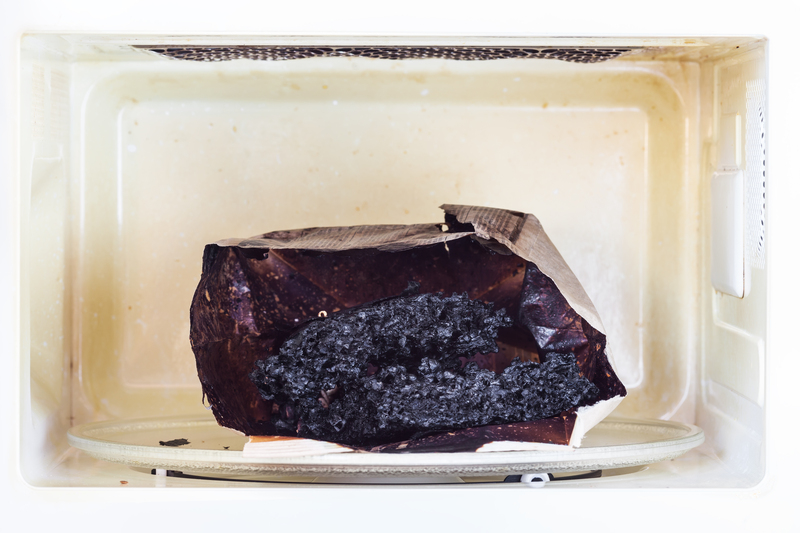The Impact of Air Quality on Health and Productivity in Homes and Offices
Posted on 18/08/2025
The Impact of Air Quality on Health and Productivity in Homes and Offices
Air quality is a crucial, yet often overlooked, element influencing our health and day-to-day effectiveness. With modern life requiring people to spend up to 90% of their time indoors, understanding the impact of air quality on both well-being and productivity is vital. This comprehensive article explores how various aspects of indoor air quality in homes and offices affect our health and ability to perform, offering practical solutions for improvement.
Why Air Quality Matters Indoors
When considering air quality, many immediately think of outdoor pollution. However, indoor air quality (IAQ) is equally--if not more--important, given the amount of time we spend inside. Factors such as ventilation, concentration of pollutants, humidity levels, and building materials all affect indoor environments.
Below are key reasons why home and office air quality cannot be ignored:
- Direct Health Impact: Poor IAQ contributes to respiratory issues, allergies, headaches, and fatigue.
- Long-Term Diseases: Chronic exposure to indoor pollutants can lead to serious illnesses, including cardiovascular and respiratory diseases.
- Productivity Drops: Studies show workers and students perform better in environments with clean and fresh air.
- Well-being and Mood: Good air quality is linked to better mental health and mood stability.

Common Indoor Air Pollutants
Indoor environments are home to a wide variety of air contaminants. Understanding what these are is the first step in combating their effects:
- Volatile Organic Compounds (VOCs): Emitted from solvents, paints, cleaning products, and furniture.
- Particulate Matter (PM2.5 and PM10): Tiny particles from cooking, smoking, printers, and outdoor air seepage.
- Biological Contaminants: Mold, bacteria, pollen, dust mites, and pet dander.
- Carbon Monoxide: Produced by combustion appliances such as stoves and heaters.
- Radon: A naturally-occurring radioactive gas that can accumulate indoors, especially in basements.
- Formaldehyde: Found in building materials and pressed-wood products.
The Health Effects of Poor Air Quality in Homes and Offices
Short-Term Health Consequences
Even brief exposure to low-quality air can bring about immediate health problems, including:
- Eye, nose, and throat irritation
- Headaches and dizziness
- Fatigue and difficulty concentrating
- Allergic reactions and asthma attacks
Children, the elderly, and anyone with respiratory conditions are especially vulnerable to these effects, highlighting the importance of monitoring indoor air quality both at home and in the workplace.
Long-Term Health Risks
Prolonged exposure to pollutants can cause:
- Chronic respiratory diseases such as asthma and COPD
- Cardiovascular problems, including an increased risk of heart attacks and strokes
- Neurological issues, impaired cognitive function, and even depression
- Certain cancers, particularly lung cancer from radon and second-hand smoke
According to the World Health Organization, poor indoor air quality is responsible for millions of premature deaths globally each year.
The Effects of Air Quality on Productivity
Clear Air, Clear Mind: Cognitive Benefits
The connection between the quality of indoor air and productivity is backed by robust scientific evidence. Several studies have revealed that employees and students exposed to cleaner environments show improvements in concentration, decision-making speed, and overall cognitive function. Office air quality can directly influence:
- Reaction times - Clean air allows the brain to process information with less effort.
- Problem-solving skills - Good IAQ enhances critical thinking and creativity.
- Motivation - Breathing easily fosters positive moods and more energy.
The Cost of Poor Air Quality on Businesses
According to the Harvard T.H. Chan School of Public Health, companies that invest in improving indoor air often see lower absenteeism rates, fewer sick days, and higher employee retention. Conversely, poor office air quality can result in:
- Increased errors and mistakes in work
- Reduced efficiency and output
- Greater risk of workplace accidents caused by fatigue or impaired concentration
- Higher healthcare costs for both employers and employees
Air Quality and Remote Work Environments
As remote work continues to grow, home air quality becomes just as important as office air. Many workers set up offices in basements, spare rooms, or areas with poor ventilation. This increases the risk of exposure to dust, mold, and radon--leading to reduced productivity and adverse health effects even when working from "the comfort of home".
How to Assess Indoor Air Quality
Recognizing the signs of poor air is crucial. Some indicators include frequent complaints of tiredness, recurring headaches, or even a musty smell. Here's how to evaluate your home or workplace air quality:
- Use Air Quality Monitors: These devices track pollutants like VOCs, CO2, and particulates in real-time.
- Check for Visible Mold or Dust Buildup: This can be a sign of excessive humidity or poor filtration.
- Evaluate Ventilation: Are windows rarely opened? Are vent fans non-functional or blocked?
- Survey Occupant Symptoms: Multiple cases of respiratory issues may indicate a shared IAQ problem.
How to Improve Air Quality in Homes and Offices
Easy Steps for Cleaner Indoor Air
- Increase Ventilation: Regularly open windows and use exhaust fans to exchange indoor and outdoor air.
- Invest in Air Purifiers: Devices with HEPA filters are effective at removing particulates and allergens.
- Avoid Smoking Indoors: Ban tobacco use inside all buildings.
- Use Low-VOC Products: Choose paints, cleaning agents, and office supplies that are low in harmful chemicals.
- Maintain HVAC Systems: Change filters regularly and service the system to prevent mold and bacteria buildup.
- Control Humidity: Use dehumidifiers to keep levels between 30-50% to discourage mold growth.
- Keep Spaces Clean: Regular dusting, vacuuming (with HEPA-filtered vacuums), and mopping reduce allergen concentrations.
Office-Specific Strategies
- Install Carbon Monoxide Detectors: Essential especially if offices use natural gas or have attached garages.
- Bring in Plants: Certain houseplants (like spider plants, peace lilies, and snake plants) help filter toxics and refresh air.
- Establish a Fragrance-Free Policy: Many perfumes and air fresheners contain irritants that can aggravate sensitive individuals.
- Conduct Regular Indoor Air Audits: Assess air quality frequently to catch and address issues early.
The Role of Technology in Managing Indoor Air Quality
Modern technology is making it easier to maintain optimal air quality:
- Smart Sensors: These devices provide real-time updates and actionable alerts when pollutant levels spike.
- Automated Ventilation Systems: Computer-controlled systems can adjust airflow based on air quality data.
- Integration with Smart Homes or Offices: Many air quality management solutions now synchronize with your Wi-Fi network for seamless control from your smartphone or computer.
Regulations, Standards, and Best Practices
Guidelines for Healthy Air at Home and Work
- ASHRAE Standards: The American Society of Heating, Refrigerating and Air-Conditioning Engineers offers widely adopted ventilation and air quality recommendations.
- EPA Guidelines: The Environmental Protection Agency provides actionable tips for improving both residential and commercial air quality.
- Local Building Codes: Many regions require minimum ventilation rates and mandate the use of non-toxic materials.
Adhering to these standards is essential for ensuring that both homes and workplaces are safe for occupants.

Summary: Breathing Easier for Better Health and Productivity
Air quality significantly affects health and productivity in homes and offices. Clean air promotes stronger immune systems, reduces the incidence of illness, and fosters better focus, decision-making, and comfort. By understanding common pollutants, regularly assessing indoor air conditions, and implementing straightforward solutions, residents and businesses can vastly improve indoor environments.
In conclusion, embracing good indoor air practices is a smart, cost-effective way to safeguard health and maximize performance for everyone who spends their day at home or in the office. Actively managing indoor air quality is not just an option--it is a necessity for a healthy, productive tomorrow.
Frequently Asked Questions About Air Quality
How often should I check my indoor air quality?
Experts recommend assessing air quality at least once a year, or whenever significant changes occur (such as renovations, new furniture, or when health complaints arise).
Can plants really improve air quality?
While plants can absorb some toxins and increase oxygen levels, they should complement, but not replace, mechanical ventilation and air purification.
Is air quality more important at home or at work?
Both are equally important, since exposure at either location can lead to health risks and reduced productivity.
Are air purifiers worth the investment?
Quality air purifiers with HEPA filters can significantly reduce indoor particulate matter, especially beneficial for allergy sufferers and those living in high-pollution areas.
What is the single most effective way to improve indoor air?
Maximize natural ventilation by regularly opening windows and ensuring HVAC systems are well-maintained. This removes stale air and brings in fresh air, helping dilute indoor pollutants.




